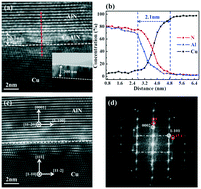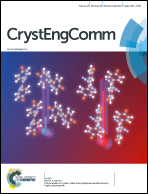Control of interfacial reactions for the growth of high-quality AlN epitaxial films on Cu(111) substrates
Abstract
High-quality AlN epitaxial films have been epitaxially grown on Cu(111) substrates by pulsed laser deposition (PLD) through effectively controlling the interfacial reactions between AlN epitaxial films and Cu substrates. The interfacial properties of the as-grown AlN/Cu hetero-interfaces and their formation mechanisms have been systemically studied. A 2.1 nm-thick CuxAl1−xN interfacial layer is formed in AlN/Cu hetero-structures at a high growth temperature of 600 °C, while abrupt and sharp AlN/Cu hetero-interfaces with no interfacial layer are achieved by effectively controlling the interfacial reactions at a low growth temperature of 450 °C. The as-grown ∼300 nm-thick AlN epitaxial films grown at 450 °C show very smooth surfaces with a root-mean-square surface roughness of 1.2 nm and high crystalline quality with full-width at half-maximum values of X-ray rocking curves for AlN(0002) and AlN(10−12) of 0.7° and 0.8°, respectively. Meanwhile, the residual stress in the as-grown AlN epitaxial films is also well controlled through low temperature growth with a residual compressive stress of 0.30 GPa. These high-quality AlN epitaxial films are of paramount importance for the commercial development of high-performance AlN-based optoelectronic devices.



 Please wait while we load your content...
Please wait while we load your content...